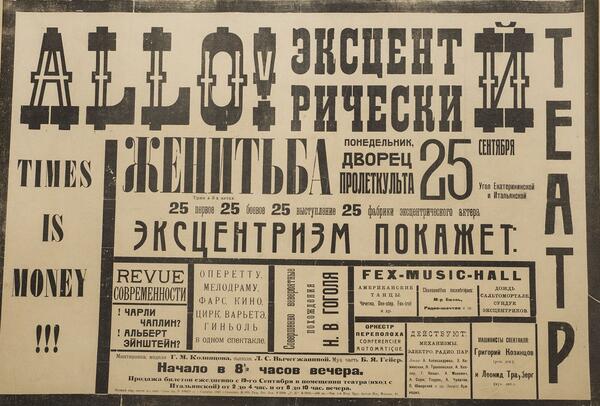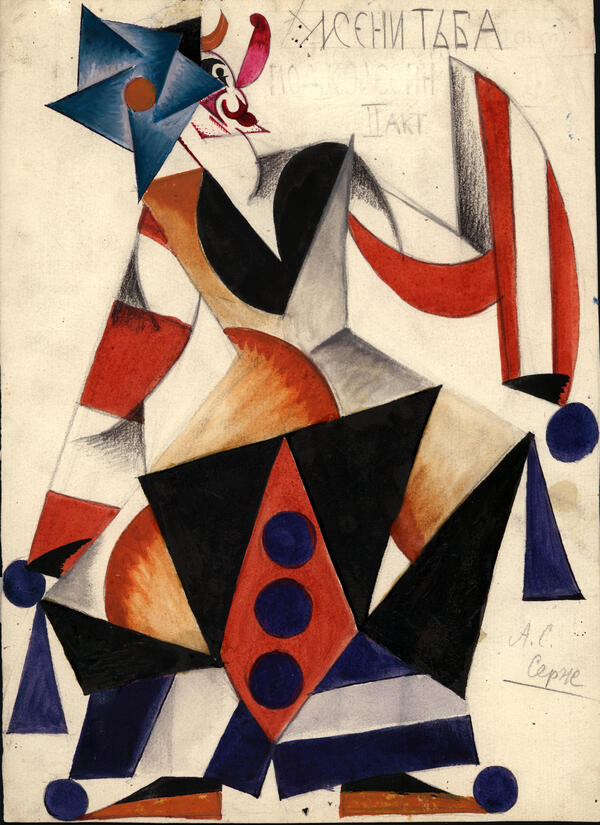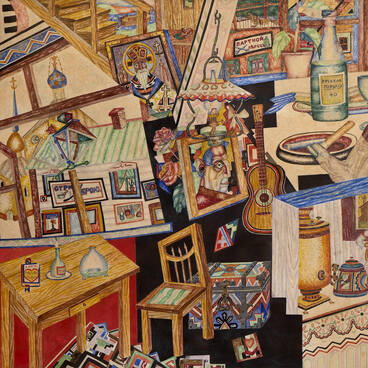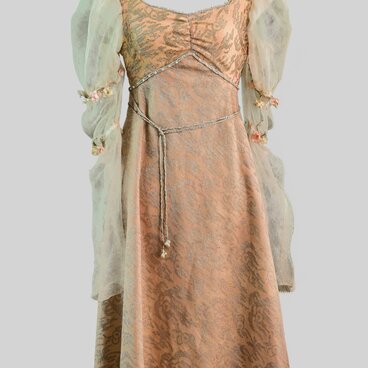In 1921, a 16-year-old resident of Kiyv Grigory Kozintsev and 20-year-old Leonid Trauberg from Odessa met in Petrograd, marking the beginning of the creative collaboration which greatly influenced the history of the Russian theater and cinema. Even in the initial stages, Kozintsev and Trauberg were reaching for the stars. They chose not to start with a single play or film, but to open an acting school and set their own directives to train a new kind of actor.
Sketch for the play “Marriage”
Время создания
1922
Место создания
the USSR
Размер
73,2x53,7 cm
Техника
paper, watercolor, crayon, lacquer, drawing ink
Коллекция
Выставка
7
Открыть в приложении#3
#10
Grigory Kozintsev. Fyokla’s costume design for the play “Marriage” based on the eponymous comedy by Nikolai Gogol. 1922
#11
Grigory Kozintsev and Leonid Trauberg believed that a new age of theater and cinema was impossible without a new type of actors, just as the society would never change if people in it stayed the same. The theater school was named the Factory of the Eccentric Actor (FEKS) and was located at 34 Fontanka Street.
The ambitious founders of the new school took quite a serious approach to their work: on December 5, 1921, Kozintsev and Trauberg wrote the “Manifesto of the Eccentric Theater.” The document rejected conventional art and welcomed the most unusual combinations of musical, circus, and sports.
Soon it was time the put the loud statements into practice: in 1922, the play “Marriage” by Gogol was staged. It had been greatly experimented with and thus changed beyond recognition: it did not feature the original characters, instead, the actors turned into Charlie Chaplin and Albert Einstein. The premiere poster defined its genre as “a stunt in three acts.”
The ambitious founders of the new school took quite a serious approach to their work: on December 5, 1921, Kozintsev and Trauberg wrote the “Manifesto of the Eccentric Theater.” The document rejected conventional art and welcomed the most unusual combinations of musical, circus, and sports.
Soon it was time the put the loud statements into practice: in 1922, the play “Marriage” by Gogol was staged. It had been greatly experimented with and thus changed beyond recognition: it did not feature the original characters, instead, the actors turned into Charlie Chaplin and Albert Einstein. The premiere poster defined its genre as “a stunt in three acts.”
#12
Playbill of the “Marriage” based on the eponymous comedy by Nikolai Gogol. Staged by the Factory of the Eccentric Actor (FEKS). 1922
#13
The costumes and stage sets designed by Grigory Kozintsev were equally eccentric. As he later recalled,
#14
The costumes and make-up were a buffoonish exaggeration; there was a bit of farce in everything.
#15
Grigory Kozintsev. Podkolyosin’s costume design for the play “Marriage” based on the eponymous comedy by Nikolai Gogol. 1922
#16
The sketches for that performance participated in the exhibition of the Association of New Art Trends organized in Petrograd in June 1922. In the early 1930s, the theater critic Stepan Danilov insisted that Grigory Kozintsev should transfer the drawings to the Leningrad Museum of Theater and Music.
#9
Ministry of Culture of the Russian Federation
читать дальшескрыть
00:00
00:00
1x
Sketch for the play “Marriage”
Время создания
1922
Место создания
the USSR
Размер
73,2x53,7 cm
Техника
paper, watercolor, crayon, lacquer, drawing ink
Коллекция
Выставка
7
Открыть в приложении
Поделиться






